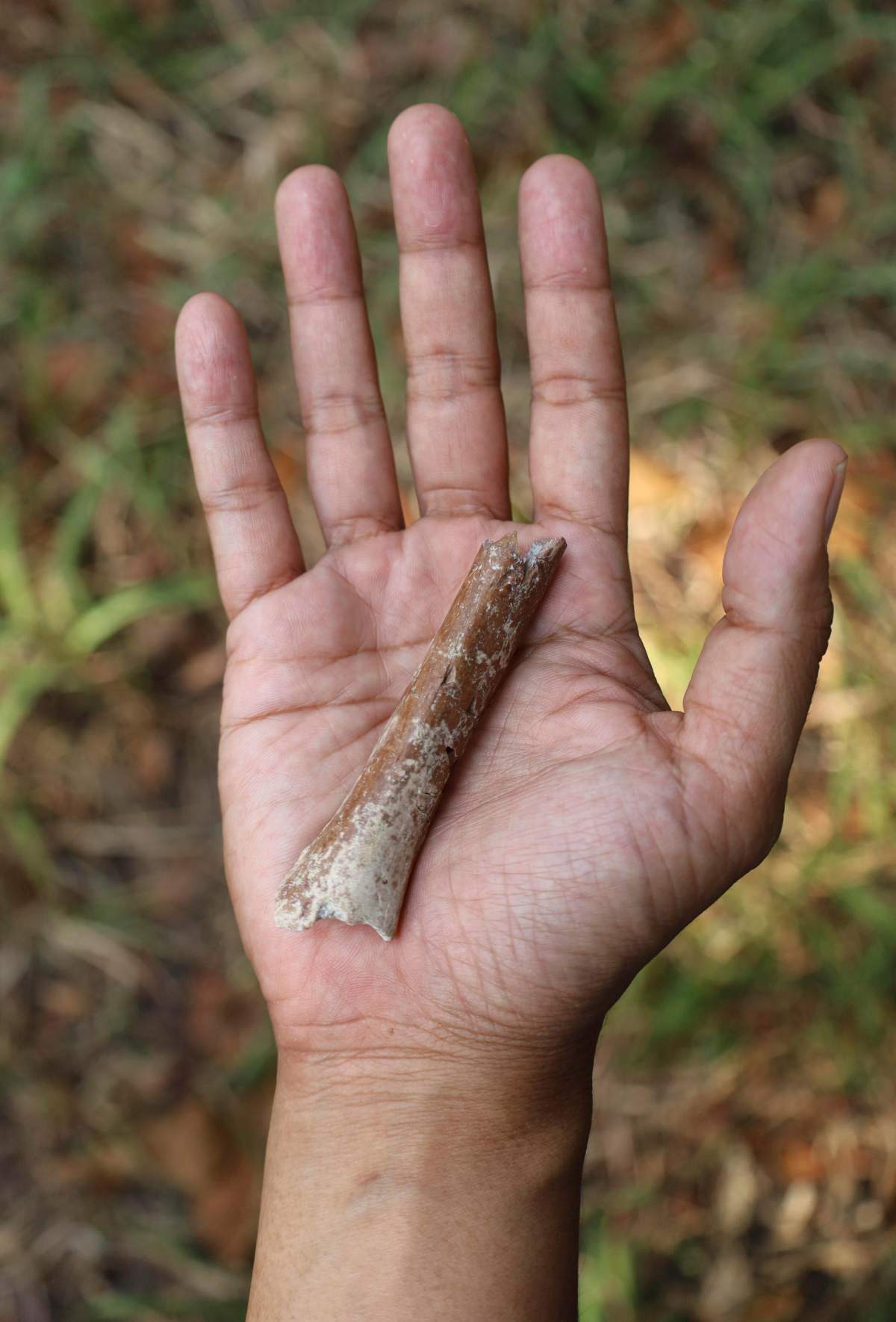Twenty years after researchers discovered an ancient race of “hobbit” humans on the Indonesian island of Flores, a new team has found fossils that are even smaller and even more ancient.

The original hobbit fossils — named after the fictional race in The Lord of the Rings — date back to between 60,000 and 100,000 years ago. The species was dubbed Homo floresiensis, referring to the island of Flores where they were found, and scientists estimate they stood about 3.5 feet tall. The only hobbit fossils ever found have been discovered in Flores.
The new fossils were found at a site called Mata Menge, about 72 kilometres from the Liang Bua cave where the first hobbit bones were uncovered. These remains date back a staggering 700,000 years.
An international team of scientists helped analyze the bones and the results of their research were published Tuesday in Nature Communications. The study found that the bones represent the ancestors of Homo floresiensis, who were even shorter in stature.
From a partial jawbone, six teeth and a carefully reconstructed arm bone, researchers were able to estimate that the hobbit ancestors were about 2.4 inches shorter than their descendants. The disparity in size could come down to natural variation within the species, as is seen in modern humans, but what the results do clearly show is that Homo floresiensis has maintained its small size over a remarkably long period of time.
This is important because scientists still don’t know why or how this race of humans came to be so tiny.
One theory suggests that the hobbits shrank from an earlier, taller human species called Homo erectus, which is believed to be the first early human species to migrate out of Africa.

Get breaking National news
The fossils of Homo erectus have been found in Asia as far east as China and the Indonesian island of Java, so some researchers believe that the hobbits descended from a group of Homo erectus who were isolated on the island of Flores and dramatically shrank over time, according to the Smithsonian National Museum of Natural History.
This process is called “island dwarfism,” and it results from long-term isolation on an island with limited food resources. Over time, evolution selects for smaller members of the species who can survive on less food. A related example of this is the now-extinct pygmy elephant of Flores, which underwent a similar shrinking process on the same island as the hobbits.
“Perhaps, there was no need to be large-bodied, which requires more food and takes longer to grow and breed,” said lead study author Yousuke Kaifu, a professor at the University of Tokyo, to CNN. “The isolated island of Flores had no mammalian predators and other hominin species, so small body size was OK.”
But another leading theory suggests that the hobbit humans were already small when they reached Flores. Proponents of this theory posit that Homo floresiensis descended from Homo habilis, a race of humans even older than Homo erectus.
Tuesday’s study appears to lend credence to this theory, because it suggests that the hobbit ancestors were shorter than their descendants, and potentially grew taller over time. If the Homo erectus theory were true, scientists might expect Homo floresiensis ancestors to be taller, with the fossil record showing them shrinking over time.
The main problem with the Homo habilis theory is that fossils from this race have only been found in Africa, with no indication they ever migrated into Asia.
To resolve the debate, researchers will have to search for early human remains dating even further back, slightly more than one million years ago, when ancient people are believed to have first arrived on Flores. The oldest stone tool found on Flores dates back at least one million years, the study notes.
Matt Tocheri, Canada research chair in human origins, told CNN he isn’t convinced the hobbit humans descended from the taller Homo erectus.
“I agree that their evidence indicates that small-bodied hominins were present on Flores at least 700,000 years ago. But why does that have to mean that their immediate ancestors that first arrived on the island were larger?” Tocheri said.
“I think this question remains unanswered and will continue to be a focus of research for some time to come.”
There is still much to learn about these enigmatic hobbit humans. Another unsolved mystery concerns how these ancient people got to the island of Flores to begin with, as the nearest island is about nine kilometres away across treacherous seas.
Questions also remain about how this ancient race of humans died out and if they ever interacted with Homo sapiens, the ancestors of modern humans.
Homo floresiensis was one of the last human species to go extinct and they lived around the same time as Neanderthals. We know that Neanderthal DNA still exists in current-day humans: about one to four per cent of the genomes of European and Asian people, according to the Smithsonian. Could it be possible that Homo floresiensis contributed some genetic material to modern humans too?
Who knows, there may be a little hobbit in each of us.














Comments